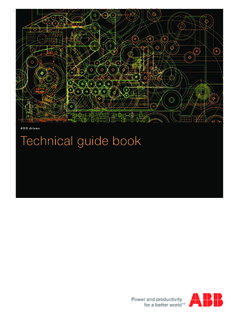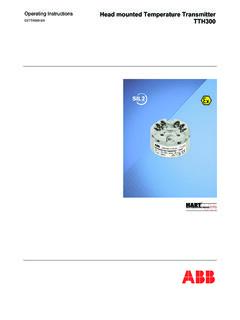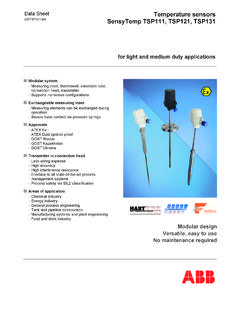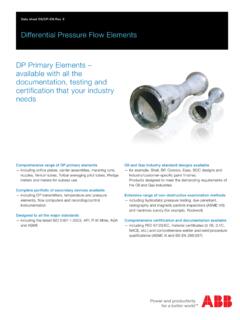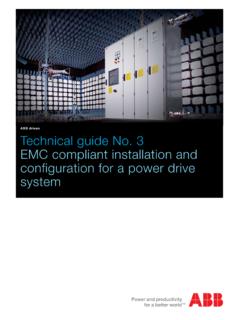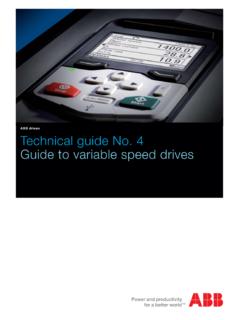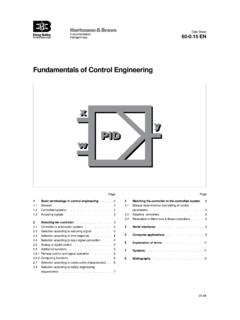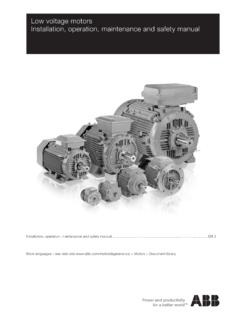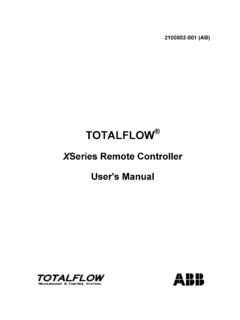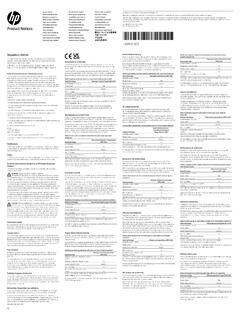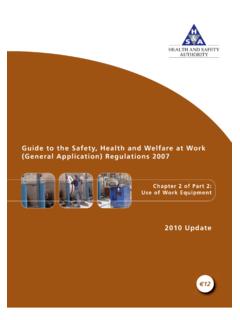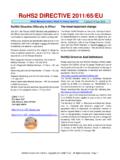Transcription of Electrical installation handbook Protection, control and ...
1 Technical guide - 6th edition 2010 Electrical installation handbookProtection, control and Electrical devicesFirst edition 2003 Second edition 2004 Third edition 2005 Fourth edition 2006 Fifth edition 2007 Sixth edition 2010 Published by ABB SACEvia Baioni, 35 - 24123 Bergamo (Italy)All rights reservedElectrical installation handbookProtection, control and Electrical devicesElectrical installation handbookProtection, control and Electrical devicesGeneral aspects Part 1 Protection and control devicesPart 2 Electrical devicesIndexIntroduction.
2 61 Standards General IEC Standards for Electrical installation ..19 General aspects6 Protection, control and Electrical devices | ABBI ntroductionScope and objectivesThe scope of this Electrical installation handbook is to provide the designer and user of Electrical plants with a quick reference, immediate-use working tool. This is not intended to be a theoretical document, nor a technical catalogue, but, in addition to the latter, aims to be of help in the correct definition of equipment, in numerous practical installation dimensioning of an Electrical plant requires knowledge of different factors relating to, for example, installation utilities, the Electrical conductors and other components; this knowledge leads the design engineer to consult numerous documents and technical catalogues.
3 This Electrical installation handbook , ho-wever, aims to supply, in a single document, tables for the quick definition of the main parameters of the components of an Electrical plant and for the selection of the protection devices for a wide range of installations. Some application examples are included to aid comprehension of the selection installation handbook usersThe Electrical installation handbook is a tool which is suitable for all those who are interested in Electrical plants: useful for installers and maintenance technicians through brief yet important electrotechnical references, and for sales engineers through quick reference selection of the Electrical installation handbookSome tables show approximate values due to the generalization of the selec-tion process, for example those regarding the constructional characteristics of Electrical machinery.
4 In every case, where possible, correction factors are given for actual conditions which may differ from the assumed ones. The tables are always drawn up conservatively, in favour of safety; for more accurate calcu-lations, the use of DOCWin software is recommended for the dimensioning of Electrical installations. ABB | Protection, control and Electrical devices 71 General aspectsIn each technical field, and in particular in the Electrical sector, a condition sufficient (even if not necessary) for the realization of plants according to the status of the art and a requirement essential to properly meet the demands of customers and of the community, is the respect of all the relevant laws and technical.
5 A precise knowledge of the standards is the fundamental premise for a correct approach to the problems of the Electrical plants which shall be designed in order to guarantee that acceptable safety level which is never StandardsThese are all the standards from which derive rules of behavior for the juridical persons who are under the sovereignty of that StandardsThese standards are the whole of the prescriptions on the basis of which machines, apparatus, materials and the installations should be designed, ma-nufactured and tested so that efficiency and function safety are technical standards, published by national and international bodies, are circumstantially drawn up and can have legal force when this is attributed by a legislative measure.
6 Application fields Electrotechnics and Mechanics, Ergonomics Electronics Telecommunications and SafetyInternational Body IEC ITU ISO european Body CENELEC ETSI CEN This technical collection takes into consideration only the bodies dealing with Electrical and electronic technologies. IEC International Electrotechnical CommissionThe International Electrotechnical Commission (IEC) was officially founded in 1906, with the aim of securing the international co-operation as regards standardization and certification in Electrical and electronic technologies.
7 This association is formed by the International Committees of over 40 countries all over the IEC publishes international standards, technical guides and reports which are the bases or, in any case, a reference of utmost importance for any national and european standardization Standards are generally issued in two languages: English and 1991 the IEC has ratified co-operation agreements with CENELEC ( european standardization body), for a common planning of new standardization activities and for parallel voting on standard Protection, control and Electrical devices | ABB1 StandardsCENELEC european Committee for Electrotechnical StandardizationThe european Committee for Electrotechnical Standardization (CENELEC) was set up in 1973.
8 Presently it comprises 31 countries (Austria, Belgium, Bulgaria, Cyprus, Croatia, Czech Republic, Denmark, Estonia, Finland, France, Germany, Greece, Hungary, Iceland, Ireland, Italy, Latvia, Lithuania, Luxembourg, Malta, Netherlands, Norway, Portugal, Poland, Romania, Slovakia, Slovenia, Spain, Sweden, Switzerland, United Kingdom) and cooperates with 12 affiliates (Albania, Belarus, Georgia, Bosnia and Herzegovina, Tunisia, Former Yugoslav Republic of Macedonia, Serbia, Libia, Montenegro, Turkey, Ukraine and Israel) which have first maintained the national documents side by side with the CENELEC ones and then replaced them with the Harmonized Documents (HD).
9 There is a difference between EN Standards and Harmonization Documents (HD): while the first ones have to be accepted at any level and without additions or modifications in the different countries, the second ones can be amended to meet particular national requirements. EN Standards are generally issued in three languages: English, French and 1991 CENELEC cooperates with the IEC to accelerate the standards preparation process of International deals with specific subjects, for which standardization is urgently the study of a specific subject has already been started by the IEC, the european standardization body (CENELEC) can decide to accept or, when-ever necessary, to amend the works already approved by the International standardization body.
10 EC DIRECTIVES FOR Electrical EQUIPMENTA mong its institutional roles, the european Community has the task of promul-gating directives which must be adopted by the different member states and then transposed into national adopted, these directives come into juridical force and become a re-ference for manufacturers, installers, and dealers who must fulfill the duties prescribed by are based on the following principles: harmonization is limited to essential requirements; only the products which comply with the essential requirements specified by the directives can be marketed and put into service; the harmonized standards, whose reference numbers are published in the Official Journal of the european Communities and which are transposed into the national standards, are considered in compliance with the essential requirements.
